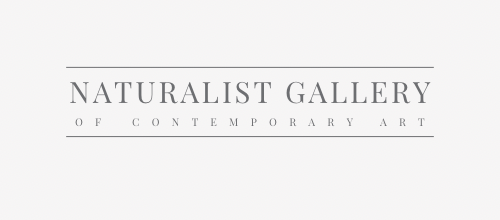Oil paintings are treasured works of art that require proper care and maintenance to ensure their longevity.
To clean oil paintings, gently dust the surface with a soft brush or cloth. Avoid using water or harsh chemicals. For stubborn dirt, consult a professional art restorer. Protect paintings from sunlight, humidity, and smoke to maintain their longevity. Regular maintenance is key.
Explore our curated selection of contemporary artists from around the globe.
Landscape with Cattle, Jan Kobell 1804
In this comprehensive guide, we will explore the best practices for cleaning and preserving oil paintings, debunk common myths, and provide step-by-step instructions for different cleaning scenarios.
-
Understanding the Importance of Cleaning Oil Paintings: Oil paintings are valuable investments that can retain their beauty for generations if properly cared for. Regular cleaning helps prevent dirt, dust, grime, and environmental factors from causing irreversible damage to the artwork. Cleaning also revitalizes the colors and ensures the painting looks its best.
The Outskirts of the Town, Eugène Jansson 1899
-
Precautions to Prevent Damage: Before delving into the cleaning process, it's crucial to take preventive measures to protect oil paintings from potential harm. Here are some precautions to consider:
- Prevent Dampness and Mold: Avoid exposing oil paintings to high humidity, moisture, or extreme temperature variations. Use a dehumidifier, keep paintings away from heat sources, cover them with plastic, and avoid hanging them in bathrooms or on outer walls prone to dampness.
- Protect from Sunlight: Direct sunlight can fade and damage oil paintings over time. Avoid hanging them in brightly lit areas or near windows without UV protection. Consider using UV-filtering glass or acrylic when framing your artwork.
- Dust and Dirt: Keep oil paintings away from sources of dust and dirt. Avoid smoking near them and use a soft brush or cloth to remove dust gently. Turn off fans to prevent dust from circulating in the air during cleaning.
Riddarfjärden, Eugène Jansson 1898
- Cleaning Process for Oil Paintings on Canvas: To clean an oil painting on canvas, follow these steps:
Step 1: Removing Dust:
- Use a soft brush, such as a sable or squirrel hair brush, to gently brush off any loose dust from the surface of the painting. Work in one direction to avoid pushing dirt into the paint.
- Avoid using feather dusters or vacuum cleaners, as they can be too rough and may cause damage.
Step 2: Removing Stubborn Grime:
- Mix warm water with a mild, olive oil-based soap in a bowl. Olive oil-based soap is gentle and effective for cleaning oil paintings.
- Dampen a soft cloth or cotton swab in the soapy water, ensuring it's not too wet.
- Gently blot the surface of the painting, starting from the top and working your way down. Be cautious near areas with thick impasto or delicate brushwork.
- Use cotton buds for hard-to-reach corners or textured areas.
- Avoid scrubbing or applying excessive pressure, as this can damage the paint layers.
Step 3: Drying and Finishing:
- After cleaning, use a clean, dry cloth to gently remove excess moisture from the painting.
- Allow the painting to air dry completely before rehanging or framing it.
- Avoid using hairdryers or direct heat sources, as they can cause the paint to crack or warp.
Summer Luxuriance, Jacobus van Looy 1890
- Cleaning Oil Paintings on Paper: Cleaning oil paintings on paper requires extra caution. Here's how to clean them safely:
- Determine the Paint Type: Ensure that water-based paints were not used in the creation of the artwork. If unsure, avoid using a wet cloth and instead use a soft, dry paintbrush to dust the surface gently.
- Using a Damp Cloth: If the painting is oil-based, lightly dampen a cloth with soapy water and gently wipe the frame, avoiding the exposed paper areas.
- Avoid Excessive Moisture: Be careful not to dampen the paper or create water stains. Since most works on paper are framed with glass, focus on cleaning the frame rather than the painting itself.
Old Cottages at Pinner, Helen Allingham 1890
- Myths of Cleaning Oil Paintings: There are several common misconceptions when it comes to cleaning oil paintings. Here are two myths to debunk:
- Cleaning with Starchy Food: Using starchy foods like bread or potatoes is not an effective method for cleaning oil paintings. They can leave residue, crumbs, or even damage the artwork.
- Cleaning with Baby Oil: Baby oil may seem gentle, but it can leave a sticky residue and change the appearance of the painting over time. Avoid using baby oil for cleaning oil paintings.
Latona and the Lycian Peasants, Jan Brueghel the Elder 1605
- When to Seek Professional Assistance: Cleaning oil paintings requires a delicate touch and understanding of different restoration techniques. If your painting requires extensive cleaning or restoration due to factors like exposure to elements, smoke, or water damage, it's best to consult a professional art restorer. They have the expertise and specialized materials to handle complex restoration processes without risking damage to the artwork.
Boer War (1900-1901), Last Summer Things Were Greener, John Byam Liston Shaw
Naturalist Gallery offers artist representation internationally. Apply your art.
Cleaning and preserving oil paintings is essential to maintain their beauty and value over time. By following proper cleaning techniques, taking preventive measures, and seeking professional assistance when needed, you can ensure that your oil paintings remain vibrant and cherished for generations to come. Remember to approach the cleaning process with care, using gentle materials and avoiding harsh chemicals or abrasive tools. With the right knowledge and precautions, you can enjoy your oil paintings for years to come.
The Cannon Shot, Willem van de Velde the Younger 1680
You may also find the following articles helpful:
How to Become a Successful Artist
How to Get Your Artwork Application Ready

